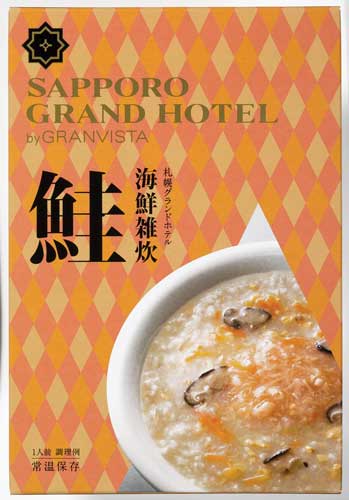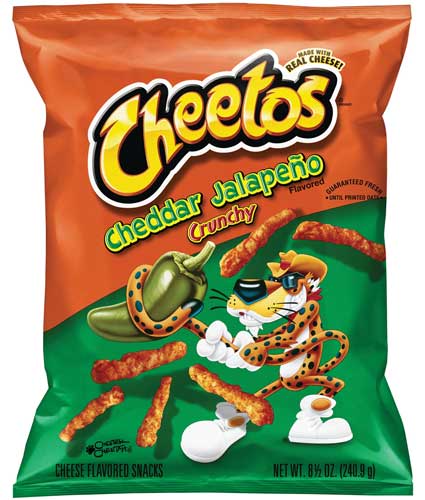Capturing More Value From Packaging
PACKAGING
Major functions and demands of packaging are expanding. Packaging technologies continue to add value in increasingly meaningful ways throughout the supply chain. Capturing the value of these packaging technologies is essential to meet many goals. Packaging that is intelligent, has a hygienic design for reuse, is active, enables personalization, clearly communicates the product, and enables rapid market introductions with innovative food processing are examples of how packaging builds brand value.
Multifunctional Intelligent Packaging
Intelligent packaging is packaging that communicates. Intelligent packaging and the internet of things (IoT) are merging into a powerful tool for the entire value chain. By 2020, 70% of the world’s population is predicted to have smartphone access. With this higher connectivity and the realization of the pragmatic capability of the IoT, package labels are moving from supply chain–specific communication—in which different labels are used by manufacturers, distributors, consumers, retailers, and post-consumer handlers—to a multifunctional label. More intelligent packaging with increasingly functional inks and other elements such as optically variable devices, printed organic light-emitting diodes (OLEDs), quick response codes, radio frequency identification, near field communication, and augmented reality allows information from farm to consumer to be used in the value chain. For example, smart labels by TagItSmart (tagitsmart.eu), FreshTag (freshtag.nl), and Insignia Technologies (insignia technologies.com) measure freshness before and after product opening, thereby decreasing food waste. And Freshcode by Instituto Tecnológico del Embalaje, Transporte y Logística (freshcodelabel.com) communicates chicken freshness visually throughout distribution, retailing, and consumer use.
To deter counterfeiting, holograms can be printed with five million dpi through technology developed at Optaglio (optaglio.cz). Augmented reality applications such as Shazam and Zappar make interactive packaging a reality for Coca-Cola products, PEZ candies, and Scooby-Doo Fruit-Flavored Snacks. These sensors enrich the product experience and generate a crowdsourced information flow back to brand owners. Partnerships between companies are offering more meaningful context for brands. For example, the use of augmented reality by consumers can result in data being assessed to provide reordering alerts. OLEDs allow for low-cost illumination from packaging materials, and this creates intriguing opportunities. But emerging multifunctional intelligent packaging that spans the entire value chain has the most promise. This is because the cost of the technology can be spread through the whole value chain. Packaging has more value when, for example, it conveys expiration dates and product information; enhances the product experience using augmented reality elements specific to a consumer or retailer; and provides information tailored to distributors, retailers, and brand owners. Multifunctional intelligent packaging provides value expected in the digital age and at events such as PepsiCo’s interactive session at the Active and Intelligent Packaging Industry Association Congress. To advance packaging to meet the needs of the entire value chain, research that quantifies the intelligent packaging benefits at each link of the chain is needed.
Hygienic Packaging
Hygienic packaging enhances the value of delivering food to consumers by lowering the environmental impact of packaging. As container reuse increases, hygienic package design that eases cleaning and allows for multiple reuses is advancing. Reusing packages reduces environmental strains as well as packaging costs. While the reuse of packaging has increased in tertiary and business-to-business markets, the reuse of primary packaging ebbed before its current resurging popularity. As a result, reusable glass containers are having a resurgence in major urban areas. This is due to the high energy costs of generating glass containers, the ability of glass containers to be sterilized, and the efficiency of handling glass packaging in population-dense markets. Where collection systems exist near urban centers, product filling centers that are similar to copackers obtain used containers; clean, sterilize, and refill them; and then ship fresh products back to urban centers. Interestingly, product premixes that require solely oil or water are shipped to these centers from brand owners, and this reduces the water weight of product being shipped from manufacturing centers to consumers. Common glass container types enable this essentially closed loop process with multiple reuse options.
Other primary container types include nonrecyclable multilayer rigid containers and lids and recyclable aluminum and steel containers. Design elements for hygienic package seals for reuse include twist-on and -off, lug, and crown closures and packaging with sealed creases and folds to ease cleaning and limit microbial growth. Research on the development of hygienic design for reuse and processes to minimize water and chemical use during cleaning is underway. But migration studies on reusable packaging that assess the impact of reuse on permeability and container integrity are needed.
Managing Diffusion From Packaging
Limiting the diffusion of compounds within packaging into food has been a focus for many years. But controlled release compounds and the ability of package compounds to interact with food add considerable value to food products. Additives such as antioxidants, antimicrobials, flavorings, and aromas are governed by federal regulations; packaging is an indirect food additive. Incorporating additives into packaging instead of in the food means that the additives can release over time, when temperatures fluctuate, or upon product use, protecting the efficacy of the additives until they are released into the food. With this technology, as the shelf life of a product progresses, preservatives or other additives are released, but if the product is consumed rapidly after packaging, less preservatives need to be released from the packaging.
 For example, compounds such as butylated hydroxytoluene and butylated hydroxyanisole have been used for many years within packaging to stall lipid oxidation and prevent yellowing in polymers. More value can be added when migration from packaging is considered. New oxygen absorbers, such as NutraSave by Mitsubishi Gas Chemical (mgc-a.com), within polymers reduce the need for gas flushing and impede lipid oxidation. Antimicrobial technologies embedded in packaging are expected to advance through entities such as NanoPack, a project funded by the European Union. Embedding aromas and flavors within packaging presents many opportunities for increased shelf life and personalization. When aromas and flavors are released upon opening, the integrity of the flavor and aroma is maintained within the packaging until consumers open it. Research and development are underway in the use of packaging to impart additives that extend product shelf life, but further work is needed to fully realize the potential of packaging in this area.
For example, compounds such as butylated hydroxytoluene and butylated hydroxyanisole have been used for many years within packaging to stall lipid oxidation and prevent yellowing in polymers. More value can be added when migration from packaging is considered. New oxygen absorbers, such as NutraSave by Mitsubishi Gas Chemical (mgc-a.com), within polymers reduce the need for gas flushing and impede lipid oxidation. Antimicrobial technologies embedded in packaging are expected to advance through entities such as NanoPack, a project funded by the European Union. Embedding aromas and flavors within packaging presents many opportunities for increased shelf life and personalization. When aromas and flavors are released upon opening, the integrity of the flavor and aroma is maintained within the packaging until consumers open it. Research and development are underway in the use of packaging to impart additives that extend product shelf life, but further work is needed to fully realize the potential of packaging in this area.
Packaging for Personalization
Personalization of foods is a major trend; it requires small-scale volume and is an opportunity for smaller food companies that can adapt to changing market needs. High-quality graphics for short runs of personalized products constitute a way that package printing can meet this trend. The limited availability of line screens for printing packaging film larger than 30 inches has often resulted in lower than desired print quality or the need to use high-cost gravure printing processes. There was a real need for better printing for wide width flexible packaging used for pouches and lidstock for seasonal or promotional short runs. Bruce Jensen, vice president of sales and marketing at TC Transcontinental Packaging (tctranscontinental.com) explains the solution: “TC uses a system called NexGen 240 to combine 249-line screen with Expanded Color Gamut. This delivers the added value of highlighting texture and detail in high-quality graphics in a wide web format and allows a three-fold increase in the number of dots versus other methods.” Tactile textures are also created with coatings to impart slick or variegated textures.
 Other packaging technology adds personalized promotional value to brands. For example, photochromatic package labels on flexible Cheetos metallized bags were converted by American Poly del Norte and reveal the Cheetos’ Chester Cheetah mascot in different poses when the labels come in contact with sunlight. Crown Packaging (crownpack.com) printed the Nescafé Azera coffee annual promotion, which uses student designs from the University of Creative Arts in the United Kingdom. The reusable metal containers allow continued brand equity in consumer pantries. The aseptic Combi Predis process by Sidel (sidel.com) that uses a blow-fill-cap process for ultra-high temperature pasteurized milk offers a similar personalization opportunity for package and product personalization by being able to create different package forms on the product-filling production line. Packaging also adds value by elegantly enabling multiple SKUs within one shipper, pallet, or a retailer-specific prepacked shelf. This level of personalization is becoming an expectation for regular and promotional products. Repacking is eliminated, and packaging facilitates the refined assortment. Still needed in this area are well-designed economical packaging and factory processes to enable a higher degree of personalization.
Other packaging technology adds personalized promotional value to brands. For example, photochromatic package labels on flexible Cheetos metallized bags were converted by American Poly del Norte and reveal the Cheetos’ Chester Cheetah mascot in different poses when the labels come in contact with sunlight. Crown Packaging (crownpack.com) printed the Nescafé Azera coffee annual promotion, which uses student designs from the University of Creative Arts in the United Kingdom. The reusable metal containers allow continued brand equity in consumer pantries. The aseptic Combi Predis process by Sidel (sidel.com) that uses a blow-fill-cap process for ultra-high temperature pasteurized milk offers a similar personalization opportunity for package and product personalization by being able to create different package forms on the product-filling production line. Packaging also adds value by elegantly enabling multiple SKUs within one shipper, pallet, or a retailer-specific prepacked shelf. This level of personalization is becoming an expectation for regular and promotional products. Repacking is eliminated, and packaging facilitates the refined assortment. Still needed in this area are well-designed economical packaging and factory processes to enable a higher degree of personalization.
Packaging That Builds Trust
The conversion from fluorescent to LED lights and the use of e-commerce sales direct to consumers translate to less light-induced oxidation and nutrient degradation. But some reactions can still occur. To maintain clarity, an ultraviolet light barrier is needed. For example, ClearShield 390B technology by Milliken (millikenchemical.com) protects products up to 400 nm wavelength. Other examples of clear packaging that builds trust are the polyethylene terephthalate single-serving cups in which POM Wonderful packages pomegranate arils. A paperboard sleeve provides stacking support and allows for high visibility of the four-cup grouping.
Optimizations as well as the increased variety of stock packaging and optimizations enable entrepreneurs to package product with less package investment and assurances that structures adequately suit the product. New processes with verified packaging ease the way for entrepreneurs to adopt these new food processing methods. For example, Printpack (printpack.com) offers six microwave-assisted thermal sterilization package systems that can be adopted by entrepreneurs.
 Claire Koelsch Sand, PhD, Contributing Editor
Claire Koelsch Sand, PhD, Contributing Editor
CEO, Packaging Technology and Research
Adjunct Professor, Michigan State Univ. and
California Polytechnic State Univ.
[email protected]
